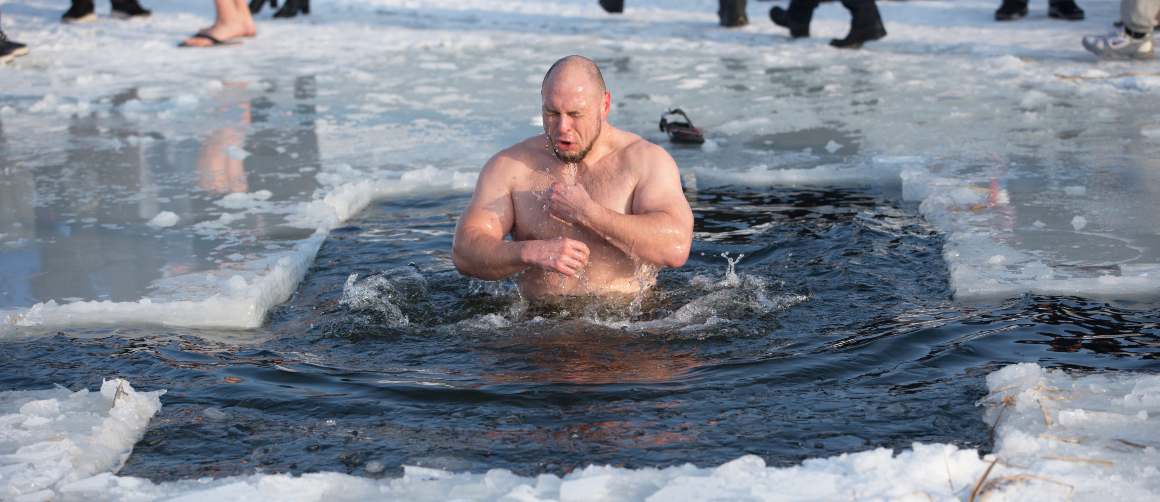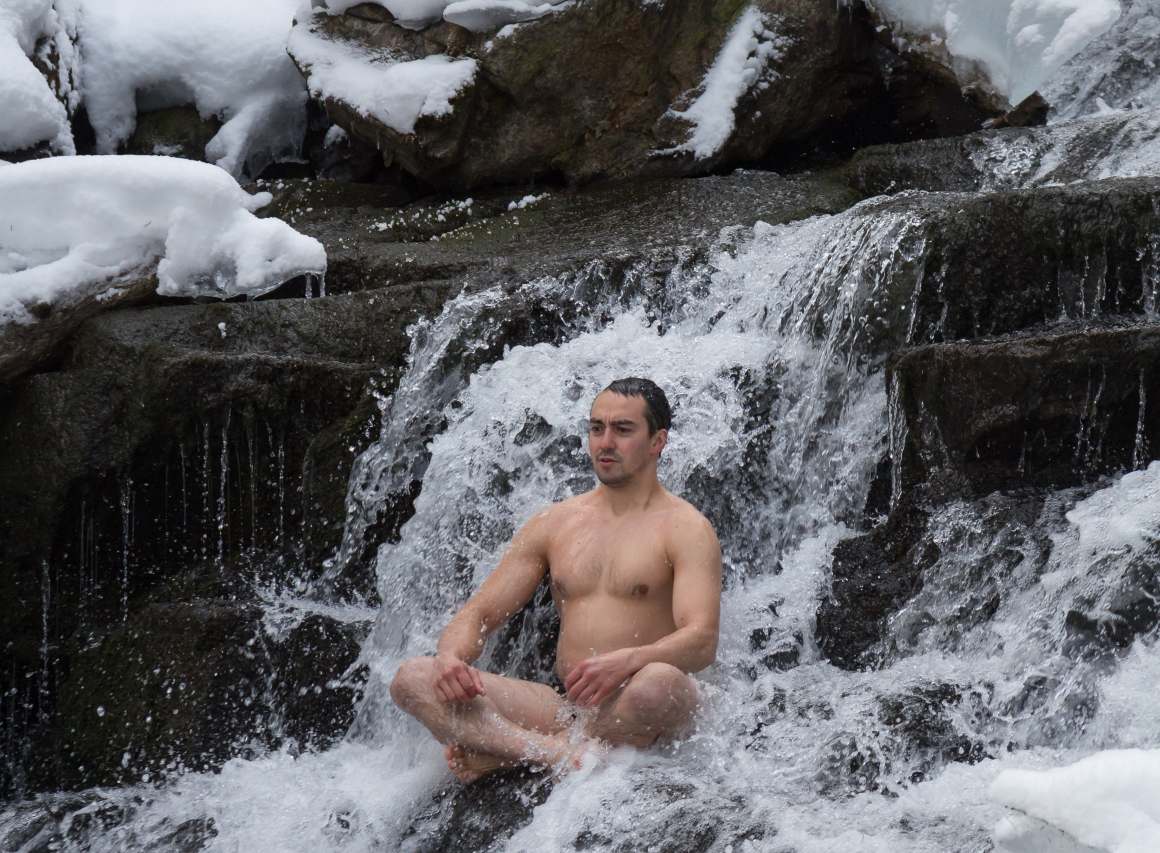Wim Hof Method : Techniques, Benefits, and Safety
Published:
The Wim Hof Method has gained significant attention in recent years for its seemingly miraculous ability to help individuals withstand extreme cold and improve overall health. This fascinating method combines specific breathing techniques with gradual cold exposure practices, leading to a range of potential benefits backed by scientific studies.
Contents:
- The Wim Hof Method Explained
- Breathing Techniques in WHM
- Cold Exposure Practices
- Scientific Studies on WHM Benefits
- Breathing Techniques in the Wim Hof Method
- Cold Exposure Practices
- Scientific Studies on WHM Benefits
- Brown Adipose Tissue Activation in Wim Hof
- Psychological Effects of Practicing WHM
- Risks and Precautions for Beginners
- FAQs in Relation to Wim Hof Method
- Conclusion
In this blog post, we will investigate the intricacies of the Wim Hof Method and its associated breathing techniques, as well as discuss how gradual cold exposure practices such as taking cold showers or ice baths can contribute to its efficacy. We will also discuss the importance of cold exposure practices such as taking cold showers or ice baths for advanced practitioners.
Furthermore, we'll examine some notable scientific studies that have investigated the benefits associated with practicing this method, including findings on lactate and pyruvate levels as well as brown adipose tissue activation in Wim Hof himself. Finally, we will touch upon the psychological effects experienced by those who practice WHM regularly and address some risks and precautions that beginners should be aware of before embarking on their own journey with this unique technique.

The Wim Hof Method Explained
The Wim Hof Method (WHM) is a unique approach to health and wellness developed by Dutch athlete Wim Hof. It combines breathing exercises, cold exposure, and meditation techniques that allegedly provide benefits such as stress reduction, improved immune response, and increased energy levels. This method has gained popularity among healthy individuals looking for ways to optimize their well-being.
In this section of the blog post, we will discuss the three main components of WHM: breathing techniques, cold exposure practices, and meditation. We will also delve into some scientific studies supporting its potential benefits while highlighting any risks or precautions beginners should be aware of when starting their journey with this practice.
Breathing Techniques in WHM
- Deep inhales through the nose: One key aspect of WHM's breathing technique involves taking deep breaths through your nose until you feel your belly expanding. This helps increase oxygen intake while promoting relaxation.
- Forceful exhales through the mouth: After each deep inhale comes a forceful exhale through your mouth which helps expel carbon dioxide from your body more efficiently than regular exhalations would allow for.
This combination of controlled inhalation and exhalation aims to improve overall lung capacity while helping practitioners better handle cold exposure during other parts of the method.
Cold Exposure Practices
- Taking cold showers: Gradual exposure to colder temperatures can help train our bodies to adapt more effectively over time. A simple way for beginners to start incorporating this element into their routine is by taking short but progressively colder showers.
- Ice baths for advanced practitioners: For those who have become more accustomed to cold exposure, ice baths can provide an even greater challenge and potential benefits. As an advanced practitioner, caution should be taken when engaging in this practice and one's body signals must always be heeded.
By engaging in WHM, we can not only enhance our physical resilience but also build mental toughness when confronted with uncomfortable circumstances.
Scientific Studies on WHM Benefits
A study conducted by the Radboud University Medical Center found that individuals practicing WHM showed a stronger immune response when exposed to bacterial endotoxin compared to control subjects. This suggests that the method may help boost overall immunity and potentially prevent illness in healthy people. Another research finding indicated higher plasma concentrations of lactate and pyruvate in participants after performing breathing exercises combined with cold exposure, which could be beneficial for treating autoimmune diseases or other inflammatory conditions.
In addition, studies have shown positive effects on immune system function during meditation sessions as part of the Wim Hof Method practice. These findings support the idea that combining different techniques within one holistic approach may yield synergistic health benefits worth exploring further.
The Wim Hof Method is a powerful tool for improving overall health and wellbeing, but it's important to understand the breathing techniques associated with this method in order to gain maximum benefit. By understanding these simple yet effective exercises, one can begin their journey towards improved physical and mental performance.

Breathing Techniques in the Wim Hof Method
Practicing these particular exercises may lead to various advantages, including decreased levels of stress, better concentration and augmented energy. Let's dive into the two main components of WHM breathing:
Deep Inhales Through the Nose
When practicing Wim Hof breathing exercises, it is essential to begin by taking deep breaths through your nose. This technique allows you to fill your lungs completely with air while also engaging your diaphragm - an important muscle for efficient respiration. As you breathe in deeply, try focusing on expanding your belly rather than lifting your chest.
Forceful Exhales Through the Mouth
After filling up with air during inhalation, release it forcefully by exhaling through your mouth. The goal here is not just to expel all remaining oxygen from within but also to stimulate blood circulation throughout body organs like the heart or brain, which may contribute towards increased mental clarity over time when practiced regularly alongside other aspects of the WHM regimen.
In addition to these basic steps, there are more advanced techniques that practitioners can incorporate into their routine once they become comfortable with this foundation. For example:
- Hyperventilation Followed by Breath Retention: In this exercise, participants take rapid deep breaths for about 30 seconds before holding their breath for as long as possible without feeling discomfort or strain (source). This process is repeated several times, and it has been shown to increase blood oxygen levels while reducing carbon dioxide concentrations.
- Alternate Nostril Breathing: This technique involves inhaling through one nostril while closing the other with a finger. After holding the breath for a few seconds, exhale through the opposite nostril before switching sides (source). Alternate nostril breathing can help balance both hemispheres of your brain and promote relaxation.
It's important to note that practicing WHM breathing exercises should always be done in a safe environment, preferably seated or lying down on a comfortable surface. Avoid performing these techniques during activities such as driving or swimming where losing consciousness could pose serious risks.
To reap maximum benefits from WHM, consistency is key - make sure you incorporate these powerful breathing exercises into your daily routine alongside cold exposure practices and meditation sessions outlined within Wim Hof's teachings.
Breathing techniques in WHM are an essential part of the Wim Hof Method, allowing practitioners to increase their oxygen intake and build up resistance to cold temperatures. Cold exposure practices such as taking cold showers or ice baths can further help advanced practitioners challenge themselves and reach new heights.
Cold Exposure Practices
The second component of the Wim Hof Method (WHM) involves gradual exposure to cold temperatures through activities like taking cold showers or ice baths. While some practitioners may experience dizziness or an increased risk of fainting during these exercises initially due to rapid changes in body temperature, it's believed that regular practice can lead to individuals adapting better over time.
Taking Cold Showers
One of the simplest ways to incorporate cold exposure into your daily routine is by taking cold showers. To begin with, you can start by ending your regular warm shower with a 30-second blast of cold water and gradually increase the duration as you become more comfortable. The key is to focus on deep breathing while under the stream of cold water, which helps regulate your body's response and maintain control over any discomfort.
Ice Baths for Advanced Practitioners
For those who have mastered cold showers and are looking for a more intense challenge, ice baths offer an opportunity to further test their limits. Typically involving immersion in a tub filled with ice-cold water for several minutes at a time, this advanced form of WHM requires mental discipline and physical resilience. It is essential not only to breathe deeply but also to relax all muscles throughout the process so that they don't tense up from shock.
Beyond simply increasing one's tolerance for extreme temperatures, there are numerous potential health benefits associated with consistent practice in both methods:
- Reduced inflammation: Cold exposure has been shown to reduce inflammation in the body, which can help alleviate symptoms of chronic pain and autoimmune conditions.
- Improved circulation: Alternating between hot and cold temperatures helps stimulate blood flow, leading to better oxygenation of tissues and improved overall cardiovascular health.
- Mental resilience: Overcoming the initial discomfort associated with cold exposure can help build mental toughness, making it easier to face other challenges in life head-on.
Though it may seem intimidating to begin, by taking small steps and increasing intensity gradually as you become accustomed to the sensations of WHM, you can soon reap its potential rewards. However, by starting slowly and gradually increasing intensity over time as you become more comfortable with the sensations involved, you'll be well on your way towards reaping the potential benefits that the Wim Hof Method, also known as the Wim Hof technique, Wim Hof breathing method, or Wim Hof breathing technique, claims to offer.
Research into the effects of cold exposure on physical and mental health has demonstrated potential benefits, though further exploration is necessary to fully understand them. To explore this more deeply, let us now turn our attention towards scientific studies on WHM benefits.

Scientific Studies on WHM Benefits
Over the years, several scientific studies have been conducted to investigate the potential benefits of practicing the Wim Hof Method (WHM) on human physiology. These research efforts have yielded promising results in various aspects of health and wellness.
Radboud University Medical Center Study
A study conducted by Radboud University Medical Center in collaboration with Wim Hof himself found that a group of participants who practiced WHM for ten days experienced significant improvements in their immune response when compared to a control group. The researchers concluded that combining breathing exercises with cold exposure could lead to enhanced immune system function, potentially offering protection against diseases and infections.
Lactate and Pyruvate Research Findings
In another study, scientists discovered that individuals who practiced WHM had higher plasma concentrations of lactate and pyruvate after performing breathing exercises followed by cold exposure than those who did not practice this method. This research implies that these compounds could potentially be utilized to treat autoimmune diseases, as they have been observed to impede inflammatory responses within the body.
Brown Adipose Tissue Activation in Wim Hof
An interesting investigation tested brown adipose tissue (BAT), responsible for generating heat when exposed to cold, and cold-induced thermogenesis in Wim Hof himself. The study found that his method raised his core temperature from 88°F to 94°F, showcasing the potential of WHM in increasing cold tolerance.
Psychological Effects of Practicing WHM
Studies have indicated that embracing the Wim Hof Method can bring about psychological gains, for example diminished exhaustion, amplified vigor levels and improved respiration. However, it is important to note that these improvements did not necessarily enhance performance parameters during anaerobic-type exercises like repeated sprinting.
In addition to these physiological findings, some studies have also explored the potential psychological benefits of practicing WHM. Participants reported experiencing reduced stress levels, enhanced mental clarity, and an overall sense of well-being after engaging in this method regularly.
While more research is needed to fully understand the extent of WHM's impact on human health and wellness, current scientific evidence suggests that incorporating this practice into one's daily routine may offer a range of physical and psychological benefits.
The scientific studies on Wim Hof Method benefits have provided promising evidence for the potential health and performance advantages of this practice. Further research into how WHM activates brown adipose tissue may provide further insight into the efficacy of these techniques.
Brown Adipose Tissue Activation in Wim Hof
One of the fascinating aspects of the Wim Hof Method (WHM) is its potential to activate brown adipose tissue (BAT), which plays a crucial role in generating heat when exposed to cold temperatures. This section will delve into how WHM affects BAT activation and explore an intriguing study that examined Wim Hof's own ability to increase his core temperature through practicing his method.
BAT Activation Through WHM
Brown adipose tissue, also known as brown fat, is a unique type of body fat that generates heat instead of storing energy like white fat does. It has been found that exposure to cold can stimulate BAT activity, leading to increased thermogenesis - the process by which our bodies produce heat. The breathing techniques and cold exposure practices incorporated within the Wim Hof Method are believed to enhance this effect on BAT activation, potentially contributing towards improved cold tolerance for practitioners.
Wim Hof's Core Temperature Increase
In a remarkable study conducted by researchers at Wayne State University School of Medicine, they investigated how practicing WHM affected Wim Hof himself during prolonged periods of extreme cold exposure. They monitored his core body temperature while he was submerged in ice water for 80 minutes and discovered that it rose from 88°F (31°C) up to 94°F (34°C).
- Finding #1: The researchers observed an increase in metabolic rate during the experiment, suggesting that higher energy expenditure could be responsible for the rise in core temperature.
- Finding #2: The study also found that Wim Hof's BAT activity increased during cold exposure, which further supports the idea that WHM can enhance thermogenesis and heat production within the body.
This groundbreaking research not only demonstrates how effective WHM can be in increasing one's tolerance to extreme cold but also highlights its potential applications for individuals living or working in harsh environments. Furthermore, it suggests that regular practice of WHM could potentially help people maintain a healthy body temperature even when faced with freezing conditions.
It is important to note, however, that this study focused on Wim Hof himself - an individual who has dedicated years to mastering his method. As such, beginners should approach their own practice with caution and patience while gradually building up their cold exposure tolerance over time. This will ensure they reap the benefits of BAT activation without putting themselves at unnecessary risk.
The activation of brown adipose tissue through Wim Hof's method has been shown to be a reliable and safe way to increase core temperature, making it an attractive option for those looking for improved health. Additionally, practicing the WHM technique can have profound psychological effects such as reduced fatigue and increased energy levels which may improve overall wellbeing.

Psychological Effects of Practicing WHM
Practicing WHM can help reduce fatigue and increase energy levels, although it may not necessarily enhance performance in anaerobic exercises. However, it is essential to note that while the method can enhance overall well-being, it may not necessarily improve performance in specific anaerobic-type exercises such as repeated sprinting.
Reduced Fatigue and Increased Energy
One of the most notable effects reported by practitioners of the Wim Hof Method is a significant reduction in feelings of fatigue. This could be attributed to the combination of deep breathing exercises and cold exposure, which help increase oxygen supply throughout the body and boost mitochondrial function (source). As a result, individuals often experience heightened energy levels after practicing WHM techniques.
Improved Breathing Without Enhancing Performance
The specific breathing techniques used in WHM have been found to improve lung capacity and overall respiratory function (source). These improvements can lead to better oxygenation during exercise or daily activities; however, studies have indicated that this does not always translate into enhanced performance during high-intensity anaerobic workouts like sprinting or weightlifting (source).
In addition to these physical benefits, practicing WHM has also been linked with positive changes in mental health parameters such as stress reduction and emotional resilience. A study conducted by Radboud University Medical Center found that individuals who practiced WHM techniques experienced a significant decrease in stress levels, as well as an increase in their ability to cope with challenging situations.
It is important to remember that while the Wim Hof Method can provide numerous psychological benefits, it may not be suitable for everyone. Individuals with pre-existing medical conditions or those who are pregnant should consult their healthcare provider before attempting any new exercise regimen, including WHM practices.
Incorporating the Wim Hof Method into your daily routine could lead to improved mental and physical health outcomes. Breathing deeply and gradually introducing yourself to cold temperatures may result in feeling less tired, having more energy, and being healthier overall. However, keep in mind that these improvements might not necessarily translate into enhanced performance during high-intensity anaerobic activities like sprinting or weightlifting.
The psychological effects of practicing WHM can be profound, leading to improved energy levels and decreased fatigue. However, prior to starting WHM it is essential to be aware of the potential hazards linked with extreme cold exposure so as to guarantee a secure development through the practice.

Risks and Precautions for Beginners
Despite the potential health benefits of the Wim Hof Method (WHM), it is essential for individuals interested in trying this approach to be aware of possible risks associated with extreme cold exposure and hyperventilation. Beginners should start slowly and gradually increase their practice intensity while always listening to their body's signals.
Potential Risks Associated with Extreme Cold Exposure
Practicing WHM involves exposing oneself to extremely cold temperatures, which can pose certain risks if not done correctly. Potential problems that may come up from extreme cold exposure can include such issues as frostbite, hypothermia, or even heart-related difficulties for those at risk. To minimize these risks, beginners are advised to start with cold showers before progressing towards more advanced practices like ice baths. Therefore, it is essential to not push your body beyond its capacity and cease the practice immediately if any distress or agony is felt.
Importance of Gradual Progression
To ensure a safe journey into practicing WHM, gradual progression is key. Start by incorporating breathing exercises into your daily routine without overexerting yourself - remember that quality matters more than quantity when learning new techniques such as deep inhales through the nose followed by forceful exhales through the mouth. Once comfortable with these breathing patterns, begin introducing short periods of cold exposure after warm-up sessions until you feel ready for longer durations under colder conditions.
- Tips for Safe Practice:
- Avoid practicing on an empty stomach; eat something light beforehand.
- Always have someone nearby who can assist you in case of emergencies.
- Never practice WHM while under the influence of alcohol or drugs.
- Prior to beginning, confer with a medical professional if any pre-existing health issues or worries exist.
In addition to physical precautions, it is essential to maintain a healthy mindset when practicing WHM. Remember that everyone's body and tolerance levels are different - progress at your own pace without comparing yourself to others. By staying patient and consistent with your practice, you can gradually unlock the potential benefits of this unique method while minimizing risks along the way.
For more information on safely incorporating the Wim Hof Method into your wellness routine, consider taking an online course led by certified instructors who can guide you through each step of the process in detail.
FAQs in Relation to Wim Hof Method
Is Wim Hof Method Scientifically Accurate?
The Wim Hof Method is supported by several scientific studies, including research conducted at the Radboud University Medical Center. These studies demonstrate that practicing the Wim Hof Method can lead to increased cold tolerance, reduced inflammation, and improved immune response. However, more research is needed to fully understand its long-term effects.
Why is the Wim Hof Method So Effective?
The effectiveness of the Wim Hof Method lies in its combination of controlled breathing techniques and gradual cold exposure. This combination helps activate brown adipose tissue (BAT), which generates heat and increases metabolism. Additionally, it has been shown to improve mental well-being by reducing stress levels and increasing focus.
Is Breathwork Scientifically Proven?
Breathwork has been studied for various health benefits such as stress reduction, anxiety relief, and improved lung function. A study on diaphragmatic breathing showed positive results in reducing heart rate variability among participants with high-stress levels. While there are numerous anecdotal reports supporting breathwork's efficacy, further scientific research is necessary to validate these claims conclusively.
How Many Times a Day Should I Practice the Wim Hof Method?
To achieve optimal results from the Wim Hof Method without overexertion or risk of injury due to extreme cold exposure, it's recommended that you practice once daily during your initial training period. As you become more comfortable with both breathing exercises and cold exposure practices like showers or ice baths, gradually increase frequency if desired but always listen to your body's signals.
Conclusion
Overall, the Wim Hof Method is a powerful tool for improving physical and mental health. By practicing breathing techniques and cold exposure, practitioners can activate brown adipose tissue, reduce fatigue, and increase energy levels. Scientific studies have also shown promising results in lactate and pyruvate research findings.
However, it's important for beginners to take precautions to avoid potential risks associated with extreme cold exposure. Gradual progression is key to safely reap the benefits of this method.













